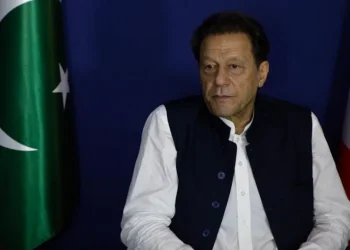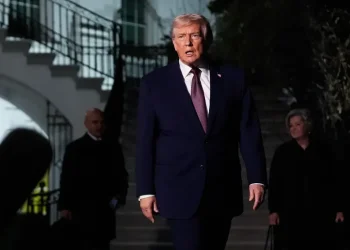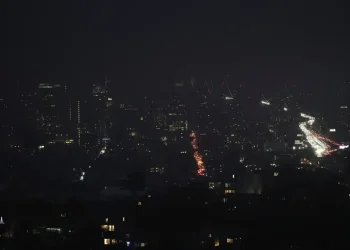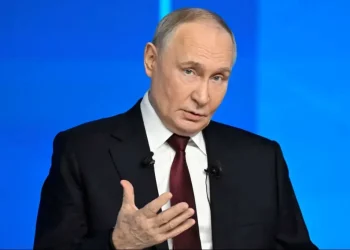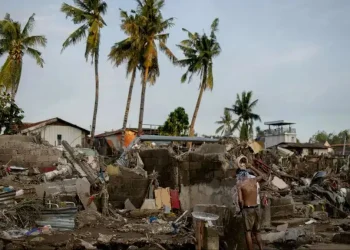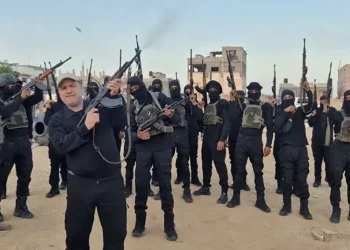Ukraine Captures Two North Korean Soldiers Fighting Alongside Russian Forces in Kursk
In a significant development, Ukraine’s forces have captured two North Korean soldiers fighting with Russian troops in the Kursk region, located near the Russian border. This marks the first such claim by Kyiv since North Korea sent thousands of soldiers to support Russia’s war effort. President Volodymyr Zelenskyy shared the news on Saturday, highlighting the strategic importance of the capture.
Ukraine’s Push in Kursk Amid Russian Counterattacks
Zelenskyy’s announcement comes as Ukraine faces a prolonged Russian offensive in the east. Despite these challenges, Ukraine has launched fresh attacks in Kursk, aiming to hold onto ground seized during a lightning incursion in August—the first occupation of Russian territory since World War II. However, Moscow’s counterattack has taken a toll, with thousands of casualties on both sides and Russia reclaiming over 40% of the 984 square kilometers (380 square miles) of Kursk that Ukraine had initially captured.
Captured Soldiers and Their Allegations
“Our soldiers have captured two North Korean soldiers in Kursk,” Zelenskyy wrote on Telegram. He revealed that the men, although wounded, survived and are now in Kyiv, where they are cooperating with Ukrainian security services. Zelenskyy shared photos of the soldiers resting on cots in a room with bars on the windows. One soldier had bandages around his jaw, while the other had bandages on his hands and wrists.
Zelenskyy emphasized that capturing the soldiers alive was no easy feat, as Russian and North Korean forces have reportedly tried to hide the presence of North Korean soldiers by executing wounded comrades to prevent their capture. According to the Ukrainian Security Service (SBU), one of the captured soldiers had no identification documents, while the other carried a Russian military ID card from Tuva, a Russian region near Mongolia.
North Korean Troops in Russian Service
One of the captured soldiers claimed that he had been told he was being sent to Russia for training, not to fight against Ukraine. He described a combat unit made up of North Koreans who had only received one week of training with Russian forces before being deployed to the front lines.
Ukraine estimates that between 10,000 to 12,000 North Korean troops have been sent to fight for Russia, many of them stationed along the front lines in infantry positions around Kursk. Last month, a senior Ukrainian official reported that a few hundred of these North Korean soldiers had been killed or wounded in battle.
Strategic Importance of Kursk and Zelenskyy’s Remarks
Zelenskyy has hinted that controlling Kursk could play a key role in pressuring Russia to negotiate an end to the war. However, Ukrainian and Western officials have expressed concerns about the risks of overextending Ukraine’s forces along the 1,000-kilometer (621-mile) front line. With Russian forces regaining lost ground in the east, Ukraine faces the delicate challenge of balancing its offensive efforts.
U.S. Sanctions Target Russian Energy Sector
In parallel with the military developments, Zelenskyy welcomed new U.S. sanctions targeting Russia’s energy sector. These sanctions aim to disrupt Russia’s use of a shadow fleet of oil-carrying vessels and target major Russian energy companies such as Gazprom Neft and Surgutneftegaz. The sanctions also target vessels suspected of transporting Iranian oil.
Zelenskyy praised the move, stating, “It is crucial that America has now struck at Russia’s shadow tanker fleet and at companies that fund Putin’s war effort.” He emphasized that the financial pressure on Russian President Vladimir Putin must be felt personally.
In response, the Russian Foreign Ministry condemned the sanctions, declaring that Washington’s actions would not go unchallenged, though it did not specify any planned retaliatory measures.
Ukrainian Drone Strikes in Russia Signal Increased Arms Production
Meanwhile, Ukrainian drones have been increasingly effective in Russia. In Tambov province, Ukrainian drones struck apartment blocks, causing significant damage to windows and balconies. Regional Governor Yegveniy Pervyshov confirmed injuries but did not provide further details.
Russia’s Defense Ministry reported shooting down 85 Ukrainian drones, mostly targeting the southern and western parts of the country. However, Ukraine’s air force also claimed to have downed 74 Russian drones in the same period. The high number of Ukrainian drone attacks suggests a ramp-up in domestic weapons production by Kyiv, potentially to inflict damage on Russia similar to what Moscow has caused in Ukraine.
Conclusion
Ukraine’s capture of two North Korean soldiers in Kursk highlights the growing international dimensions of the conflict, with North Korea’s involvement in Russia’s war effort becoming more apparent. As the situation continues to evolve, the geopolitical and military dynamics in both Kursk and the broader conflict remain uncertain, with Ukraine balancing its offensive efforts against Russian counterattacks and the wider strategic goals of the war.
This article was rewritten by JournosNews.com based on verified reporting from trusted sources. The content has been independently reviewed, fact-checked, and edited for accuracy, neutrality, tone, and global readability in accordance with Google News and AdSense standards.
All opinions, quotes, or statements from contributors, experts, or sourced organizations do not necessarily reflect the views of JournosNews.com. JournosNews.com maintains full editorial independence from any external funders, sponsors, or organizations.
Stay informed with JournosNews.com — your trusted source for verified global reporting and in-depth analysis. Follow us on Google News, BlueSky, and X for real-time updates.


